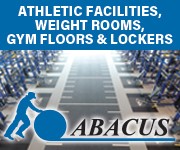Lighting bills can quickly get out of control, which means more money than necessary is being directed toward operations instead of crucial investments in education. College administrators shouldn’t have to cut costs by cutting back on staff hires, failing to adopt innovative technology or limiting student access to buildings.
By installing energy-efficient LED lighting technology, they can lower energy consumption, decrease maintenance costs, and lessen wear and tear on heating and cooling systems. As one of the least risky sustainability practices with a rapid return on investment of less than two years in many cases, LED lighting also allows universities to implement projects in phases.
Benefits Beyond Going Green and Saving Green
A move to LED lighting isn’t just about going green and saving green. There are also tremendous advantages when it comes to campus security. With better quality light and more durable lamps brightening campuses, the move to LEDs improves student safety and gives facility managers the peace of mind that comes with a long-lasting product.
Here are four ways LED lighting can help private universities make their campuses safer.
Fewer Dark Spots and Outages: For students walking through campus, LED lighting offers more even light distribution, leaving fewer dark areas and locations that can be easily targeted by vandals or criminals. LEDs offer an unparalleled even spectrum of light, reducing shadows and collectively resulting in a noticeably better-lit campus.
Unlike incandescent or CFL bulbs, LEDs also offer the ability to accurately control color and angle—making it easier to light corners and unusual spaces. LEDs also require less frequent maintenance and replacement, reducing light outages and maintaining the integrity of campus security. The lights can operate for up to 50,000 hours— or approximately eight years—meaning most students will graduate long before the lights bulbs they walk by every day need to be changed.
In addition to the safety benefits, the durability of the product leads to lower maintenance costs and higher staff productivity. That allows university employees to spend their time making campus safer in other ways instead of constantly changing light bulbs. Finally, at night or during poor weather, LEDs will turn on to their full capacity immediately without having to warm up over time. With no transition period to full brightness, LEDs are either on or off—not somewhere in between upon startup.
Better CCTV Resolution: Many universities have closed-circuit television (CCTV) systems or security cameras installed throughout their campuses to ensure student safety: however, if the proper lighting isn’t in place, CCTV systems can be unusable and frustrating to view. Fluorescent lamps and older lighting technologies tend to use magnetic ballasts that flicker at twice the frequency of the line voltage, which for the 60-hertz frequency here in the United States is equal to 120 hertz. This flicker interferes with the 30-hertz frequency of typical CCTV video systems.
LEDs don’t flicker like this as they are a solid state device and use power supplies that are typically direct current. Another problem with the quality of light from fluorescent lamps is an effect driven by the mercury vapor that makes the video “spectrally spiky.” In other words, the mercury vapor emits bright lines of UV, blue and green light, which can affect the color fidelity of the video. Because LEDs contain no mercury, they don’t cause this effect.
Smarter Facilities: Improved safety and cost savings can also be realized through building automation systems such as occupancy sensors that detect when an employee, student or visitor has entered the room or area. This allows lights in classrooms, bathrooms and other areas to turn on once movement has been detected and turn off automatically when a room isn’t being used.
LEDs are a solid-state lighting product, which means they are very robust and durable with being turned on/off frequently. Whether they’re off for long periods of time or are turned on and off repeatedly, the light output will remain relatively the same. They will also turn on immediately, with no warm-up time, and reach full brightness right away. When used with building automation systems, LEDs make classrooms and other interior rooms safer by ensuring they are fully lit whenever they’re in use.
Less Broken Glass: High-end LED lighting is optimum for challenging environments such as regions with extreme weather conditions, allowing them to stand the tests of time in a Minnesota winter or Arizona summer. While incandescent lights are made of delicate filaments that can be broken with a slight shake, LED systems are vibration and shock resistant.
If outdoor lighting has been installed on the ground, perhaps illuminating a building or flag, LEDs can last beyond students kicking the fixture or campus maintenance running into them with a lawn mower. While compact fluorescent light bulbs leak small amounts of mercury if shattered, LEDs release no harmful toxins if broken.
Because of their durability, LEDs can also stand higher levels of vandalism and won’t leave shattered glass on the ground depending upon the fixture construction. By using LED lighting, university facility managers can focus on campus security and student safety while saving on energy consumption and reducing maintenance.
LEDs offer a short return on investment that will continue to be seen over the long life of the lamp, allowing universities to better use their savings on lower tuition or more innovative technology for classrooms.










